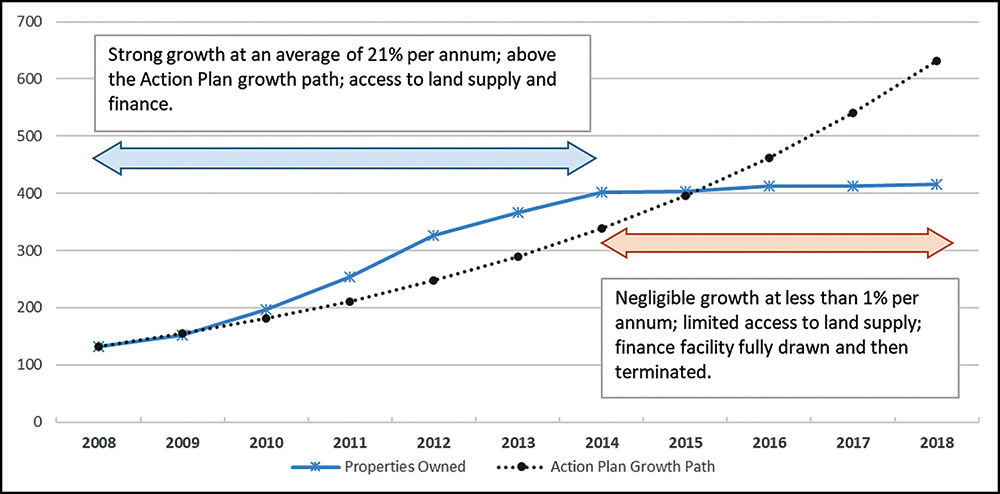
JON STANHOPE and Dr KHALID AHMED continue their forensic look at how ACT government policies around land release and community housing are devastating people struggling for accommodation.
IN Australia, community housing is delivered by not-for-profit organisations under a range of different management and ownership models.
It is generally accepted within the housing sector that community housing delivers better outcomes for tenants in co-ordinating and delivering support services, building individual capacity and meeting social equity, cohesion, and community development objectives.
While community housing providers (CHP), as a rule, generate this range of benefits, it is acknowledged that the provision of accommodation at below market rent requires public support, which is typically provided in the form of tax benefits owing to a CHP’s not-for-profit status, access to CRA, and direct funding.
Recognising their potential to deliver social benefits, some states (notably NSW, Victoria and SA) have at different times transferred public housing stock to CHPs to facilitate their growth.
The community housing sector in the ACT is relatively small. For example, currently there are seven CHP’s in the ACT, while Tasmania – a jurisdiction comparable in size – has 56 CHPs.
It is in this context that in 2007 the ACT government resolved, along with a range of other initiatives, to grow the community housing sector as part of its Affordable Housing Action Plan (AHAP). The support provided to the largest CHP at that time, Community Housing Canberra (CHC), which owned 19 dwellings, comprised:
- $3 million as a capital injection;
- Transferral to it of the title to 132 public housing properties;
- Provision of a $50 million revolving finance facility with access to funds at the 90-day bank bill swap rate; and
- Guaranteed access to suitable land for 120 dwelling sites a year at market rate through a memorandum of understanding with the Land Development Agency.
The targets established for CHC included:
- Increasing the supply of affordable rental dwellings by 250 dwellings within five years (February, 2013) and 500 dwellings within 10 years (February, 2018);
- Increasing the supply of affordable dwellings for sale by 470 dwellings within five years; and 1000 dwellings within 10 years; and
- Renewing 75 per cent of the assets transferred to CHC within five years, and 100 per cent of the assets within seven years
The CHC model has attracted considerable national interest from housing experts because of its success, in particular, in the significant growth it achieved in its stock. In a report in 2009, the Australian Housing and Urban Research Institute (AHURI) noted that “CHC is now one of the most successful not-for-profit developers in Australia”.
In a later report, AHURI again referenced the success of CHC in noting “the key ingredients that enabled this were ready access to cheap debt finance and access to land”.
In relation to the revolving finance facility, the report considered “provision of cheap government financing to the CHC was unique in Australia [in 2007] and was one of the key reasons that CHC could produce so much affordable housing stock without significant direct capital contributions from government”.
Chart 1 shows CHC’s initial progress against one of its targets (on rental stock).

Bizarrely, from 2014 on, government support for CHC was progressively withdrawn. Firstly, its guaranteed access to land was reduced from 120 to 50 sites. As the government further reduced the supply of land for housing the MOU was abandoned, with CHC needing to bid in the open, undersupplied market.
The revolving finance facility was not renewed, and the loan was called in in 2018. The Greens minister Shane Rattenbury is reported to have claimed, infamously, that this will “grant greater flexibility to CHC than was contained in the original agreement”.
In a similar vein, in the 2021-22 Budget, the government has announced “restructuring of government support for Community Housing Canberra Ltd (CHC) to ensure the continued provision of social housing properties for the Canberra community”.
Incredibly the “restructuring” referred to by the government involves the compulsory resumption, presumably of all the 132 properties, currently valued at $63 million, transferred to CHC by the government in 2007.
How the ACT government believes that the removal of $63 million worth of dwelling assets from CHC’s ownership will support community housing defies all understanding. The transfer not just reverses previous policy, it is against the policy position increasingly adopted in other jurisdictions and to which we refer above.
Incredibly, the now Minister for Homelessness and Housing Services, and Greens member, Rebecca Vassarotti, was the ACT government appointed board member of CHC throughout the period that Labor and the Greens dismantled every single component of the CHC operating model.
The ACT government’s apparent disinterest in and contempt for the community housing sector can be gleaned from a comparison, across all jurisdictions, of the amount of social housing (public housing and community housing) which each jurisdiction has, as a proportion of total households. It is also a useful measure of the level of government support for households who are unable to access the private rental market.
The AIHW data reveals that between 2014 and 2020, the largest decline in social housing share in Australia was in the ACT (Chart 2).

In order to maintain the social housing share in the ACT at the 2014 level, an additional 1600 social-housing dwellings are required. Deterioration in rental affordability and low vacancy rates have further increased demand pressures for social housing. ACTCOSS estimates the ACT has a shortfall of more than 3000 social housing dwellings, a waiting list of nearly a year for priority public housing and at least 1600 people experiencing homelessness each day.
Delivering an increase in stock in public housing of the order identified by ACTCOSS will require an investment of well over $1 billion. Based on the achievements of CHC, when it was supported by the government, this increase in housing numbers could be delivered at a fraction of that cost through an appropriate community housing growth model.
We are at a loss to understand the ACT government’s decision to emasculate CHC and effectively neuter its capacity to add to its stock of affordable housing. That the ACT Greens have not only quietly and tacitly facilitated the demise of this once nation-leading CHP but have also publicly defended their decision to do so, is bewildering to us.
Who can be trusted?
In a world of spin and confusion, there’s never been a more important time to support independent journalism in Canberra.
If you trust our work online and want to enforce the power of independent voices, I invite you to make a small contribution.
Every dollar of support is invested back into our journalism to help keep citynews.com.au strong and free.
Thank you,
Ian Meikle, editor





Leave a Reply